The complicated and ‘incomplete’ legacy of Nobuyoshi Araki
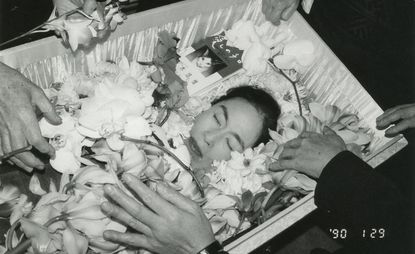
He is Japan’s most famous photographer and has defined the Western image of Japanese sexuality since he started taking pictures of Tokyo’s anything-goes sex scene in the 1960s: but what else is there to learn about the hugely influential Nobuyoshi Araki?
An ‘incomplete’ retrospective in New York gets to grips with the complexities of the vast oeuvre of the voracious photographer and his larger-than-life public image. ‘He’s not easy; he’s much more complex than the cuddly persona he projects,’ says New York’s Museum of Sex artistic and creative director Serge Becker, who first encountered Araki’s work in the 1990s. ‘Beyond the hype and controversies, there’s actually a real artist and thinker of substance. He’s on the level of Andy Warhol in regards to his prescience about art and culture.’
Those controversies include his inexhaustible depictions of kinbaku-bi, Japanese rope bondage, some of them extreme, especially for an outsider. ‘I tie women’s bodies up because I know their souls can’t be tied. Only the physical self can be tied,’ the artist told the Huffington Post in 2014, by way of explanation. ‘Putting a rope round a woman is like putting an arm round her.’ In the 1980s, Araki also directed a porn film that panned with fans and didn’t win him many.
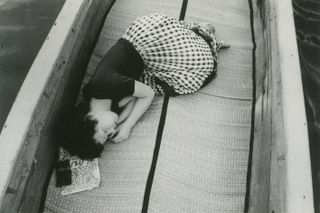
‘There’s a picture of [Yōko] sleeping on a boat on the Yanagawa River,’ Araki has said, about one of his favourite images from the Sentimental Journey series (1971-2017). ‘It was our honeymoon, so she was exhausted from all the sex. In Japan we say that you cross the Sanzu River when you depart to the “other world”. I had no intention of taking a picture like that so I feel like maybe God or someone made me take that picture. Her posture is like that of a fetus.’ Courtesy of Taka Ishii Gallery, Tokyo
Becker is part of the impetus behind what is the largest ever exhibition of the artist’s work in the US, titled ‘The Incomplete Araki: Sex, Life, and Death in the Works of Nobuyoshi Araki’. The show aims to present different facets to the artist and his interests, through a selection of more than 500 polaroids and 400 photobooks – the latter an important part of Araki’s work from the beginning, and one of the many significant contributions he has made to contemporary photography over the past five decades.
Araki’s legacy is as complicated as the artist, who is one of the most prolific of his generation: despite his fascination with physical bondage, he represents freedom in the arts and life. At the same time, his images of women have also been slammed as objectifying and contributing to a sexual stereotype – if not inventing it for the visual generation, and implicate him in an industry of sex that has not typically favoured women.
‘He ventures in his work and private life into areas that many of us are uncomfortable with,’ Becker suggests. ‘Some of the discomfort is not necessarily because we disagree with him, but because he touches us and shows us aspects of ourselves we tend to cover up. He’s brutally honest, but he gets to do it, because he shows us love and beauty too.’
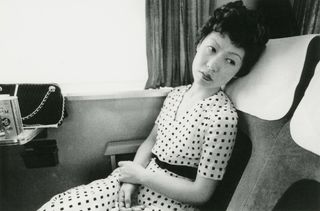
Sentimental Journey, 1971-2017, by Nobuyoshi Araki. Courtesy of Taka Ishii Gallery, Tokyo
Beneath the brazen appeal of the archetypal Araki picture – black and white, high exposure, youthful naked skin – Araki has more to show us about the murky waters of what we are, and what he is. Hurtling from erotica to hardcore porn, into tender documents of his late wife Yōko and wistful portraits of his cat, Chiro, Araki was way ahead of the game in the way he mixed the personal and the public, forging an ambiguous narrative of fact and fantasy with his lens.
‘We live in many ways in a world he helped shape, and we have adopted his language. The creation of the personal brand, the ceaseless documentation of one’s lives, the lack of privacy and sharing of personal moments, the high and the low of it all,’ Becker reflects.
In the current atmosphere of #MeToo revelations, the question is whether we need more visions of male fantasy for the future. Perhaps it’s time for a new language.
(Warning: the following images contain nudity.)
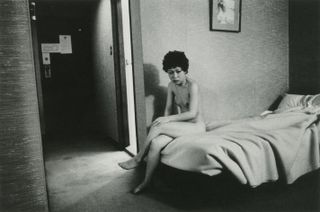
Sentimental Journey, 1971-2017, by Nobuyoshi Araki. Courtesy of Taka Ishii Gallery, Tokyo

Flowers, 1985, by Nobuyoshi Araki. Courtesy of Private Collection
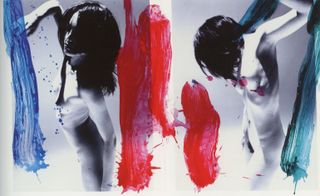
KaoRi Love (Diptych), 2007, by Nobuyoshi Araki. Kaori has been Araki’s muse and lover since the early 2000s. This series comprises photographic portraits of Kaori, which are splashed and scrawled with acrylic paint. The paint here also plays an ambiguous role as the trace of the artist’s hand – while the photographs may expose Kaori and her body, often the paint is used as a way to then partially cover or obscure her. Courtesy of Private Collection
INFORMATION
‘The Incomplete Araki: Sex, Life, and Death in the Work of Nobuyoshi Araki’ is on view until 31 August. For more information, visit the Museum of Sex website
ADDRESS
Museum of Sex
233 Fifth Avenue
New York
Wallpaper* Newsletter
Receive our daily digest of inspiration, escapism and design stories from around the world direct to your inbox
Charlotte Jansen is a journalist and the author of two books on photography, Girl on Girl (2017) and Photography Now (2021). She is commissioning editor at Elephant magazine and has written on contemporary art and culture for The Guardian, the Financial Times, ELLE, the British Journal of Photography, Frieze and Artsy. Jansen is also presenter of Dior Talks podcast series, The Female Gaze.
-
 Fenix and Federica Sala Challenge Designers to double up
Fenix and Federica Sala Challenge Designers to double upCurator Federica Sala and innovative interiors material brand Fenix's Design Duo Double Feature project brings three design duos together to create dual-purpose furniture
By Ifeoluwa Adedeji Published
-
 Interni Venosta is a new furniture brand by the Dimorestudio founders
Interni Venosta is a new furniture brand by the Dimorestudio foundersLaunched at Milan Design Week 2024, Interni Venosta is Dimorestudio Britt Moran and Emiliano Salci's new brand, crafted by Tuscan manufacturer Fabbri Services and paying homage to 1970s Italian design
By Rosa Bertoli Published
-
 Gucci’s ‘Design Ancora’ reimagines furniture classics in rich red
Gucci’s ‘Design Ancora’ reimagines furniture classics in rich redGucci launches new editions of Italian design icons in an alluring deep red, showcased during Milan Design Week 2024
By Simon Mills Published
-
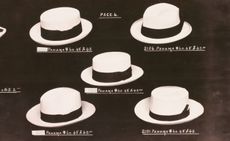 The Met’s ‘The Real Thing: Unpacking Product Photography’ dissects the avant-garde in early advertising
The Met’s ‘The Real Thing: Unpacking Product Photography’ dissects the avant-garde in early advertisingA new exhibition at The Metropolitan Museum of Art in New York explores the role of product photography and advertising in shaping the visual language of modernism
By Zoe Whitfield Published
-
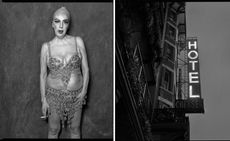 Tony Notarberardino’s Chelsea Hotel Portraits preserve a slice of bygone New York life
Tony Notarberardino’s Chelsea Hotel Portraits preserve a slice of bygone New York life‘Tony Notarberardino: Chelsea Hotel Portraits, 1994-2010’, on show at New York’s ACA Galleries, is the photographer’s ode to the storied hotel he calls home and its eclectic clientele
By Hannah Silver Published
-
 ‘LA Gun Club’: artist Jane Hilton on who’s shooting who
‘LA Gun Club’: artist Jane Hilton on who’s shooting who‘LA Gun Club’, an exhibition by Jane Hilton at New York’s Palo Gallery, explores American gun culture through a study of targets and shooters
By Hannah Silver Published
-
 Detroit Institute of Arts celebrates Black cinema
Detroit Institute of Arts celebrates Black cinema‘Regeneration: Black Cinema 1898-1971’ at the Detroit Institute of Arts (DIA) brings lost or forgotten films, filmmakers and performers to a contemporary audience
By Anne Soward Published
-
 BLUM marks 30 years of Japanese contemporary art in America
BLUM marks 30 years of Japanese contemporary art in AmericaBLUM will take ‘Thirty Years: Written with a Splash of Blood’ to its New York space in September 2024, continuing its celebration of Japanese contemporary art in America
By Timothy Anscombe-Bell Published
-
 Todd Gray’s sculptural photography collages defy dimension, linearity and narrative
Todd Gray’s sculptural photography collages defy dimension, linearity and narrativeIn Todd Gray’s New York exhibition, he revisits his 40-year archive, fragmented into elaborated frames that open doors for new readings
By Osman Can Yerebakan Published
-
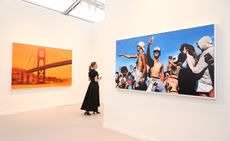 Frieze LA 2024 guide: the art, gossip and buzz
Frieze LA 2024 guide: the art, gossip and buzzOur Frieze LA 2024 guide includes everything you need to know and see in and around the fair
By Renée Reizman Published
-
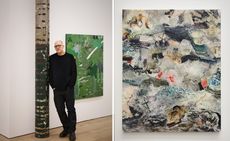 New York artist Christopher Astley showcases an alternative natural world
New York artist Christopher Astley showcases an alternative natural worldAt Martos Gallery in New York, Christopher Astley’s paintings evoke an alternative natural world and the chaos of warfare (until 16 March 2024)
By Tianna Williams Published